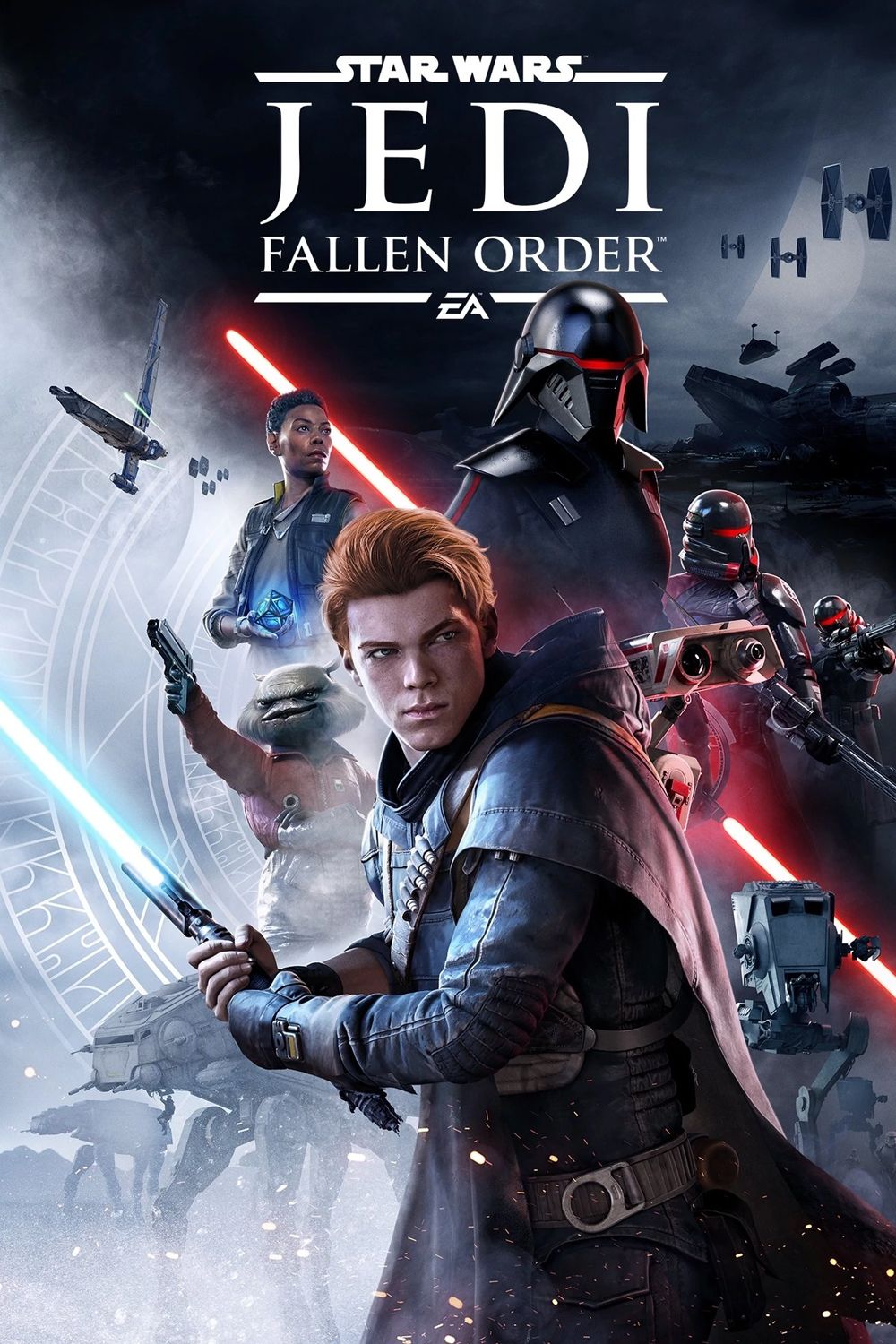Games
Five Years Later, Jedi: Fallen Order Sets Star Wars Standards High

Of all Star Wars games, it’d be tough to discern one that’s been as widely praised as Star Wars: Knights of the Old Republic, and for the longest time its reign was fairly uncontested beyond classics such as entries in the Star Wars Battlefront series, Star Wars: Republic Commando, or Star Wars: The Force Unleashed. That said, this debate has had greater meat on its bones since Star Wars Jedi: Fallen Order introduced Cal Kestis as a fledgling Padawan who witnessed Emperor Palpatine’s Order 66 firsthand when he lost his Jedi Master and fled to Bracca as a refugee in hiding.
Respawn and EA’s Star Wars Jedi: Fallen Order capitalizes on several gameplay genres—Soulslike, Metroidvania, platformer, and action-adventure—and melds them into a flavorful cocktail while never abandoning its immersive and unmistakable Star Wars atmosphere. Not since The Force Awakens has a Jedi-related Star Wars story felt as authentic, at least not without relying wholly on fan service. It’s not without its flaws, but Jedi: Fallen Order is a reminder, half a decade later, of how much potential for original storytelling and gripping gameplay still flows within Star Wars’ rich vein.
Related
Hogwarts Legacy’s Dugbog Echoes Star Wars Jedi: Fallen Order’s Oggdo
Table of Contents
Hogwarts Legacy shares a few significant similarities with Star Wars Jedi: Fallen Order, including how to effectively deal with a Dugbog or Oggdo.
Jedi: Fallen Order’s Cal Kestis is One of Star Wars’ Best Protagonists
Cal Kestis may have been a safe option for a Star Wars protagonist and not every Respawn developer’s first choice. Still, he has quickly become one of the most robust and nuanced Jedi figures in any media. Cal’s red, flowing hair and bowlegged, lanky acrobatics distinguish him decently well, but where he truly eclipses other characters is in his unrelenting goodness and moral code as someone hoping to restore the Jedi Order and avenge his Jedi Master Jaro Tapal.
Of course, Cal’s companionship with the adorable droid BD-1 is also praiseworthy and defines gameplay with a blend of their talents. Cal and the Stinger Mantis crew—BD-1, Cere Juna, Greez Dritus, and later Nightsister Merrin—travel between Bogano, Dathomir, Zeffo, Kashyyyk, Ilum, and Nur in Star Wars Jedi: Fallen Order, and their adventures lead to exciting biomes as they evade the Galactic Empire’s Inquisitors and aid in rebellion efforts while deciphering ancient lore to unearth a Jedi holocron.
Cal’s broken lightsaber hilt has so much personality of its own and carries with it a tragic reminder of how he came into its possession. It isn’t even instantly clear that it was bisected and that players would soon be able to repair it to accommodate a double-bladed attachment, let alone a dual-bladed stance attack Cal learns once he constructs his own lightsaber by combining Jaro and Cere’s hilts on Ilum.
Cal’s attunement to the Force is fractured during the Jedi Purge, leading to him suffering a bout of amnesia and losing his grasp on several Force gimmicks he had learned. Interestingly, Cal retained the ability to slow objects in motion as well as a unique power called Psychometry, which allows him to sense an item’s experiences or history, and progression throughout Fallen Order is chiefly tethered to Cal’s reacquisition of the abilities he lost.
Fallen Order isn’t so long that its piecemeal unlocking of Force abilities becomes tedious, and that’s particularly true if players have enough foresight to patiently wait until they’ve obtained each one before deciding to backtrack into a planet’s claustrophobic and labyrinthine corners. Fallen Order’s level design and how players interact with BD-1’s 3D holomaps have certainly aged poorly, and the rewards players receive for their efforts in attempting to locate and slice each chest only amounting to colorways, lightsaber component materials, and ponchos remain a tough pill to swallow.
That’s not to say Fallen Order’s achievements as a Metroidvania aren’t exceptional, though. Between irrevocably vital stim canisters players earn and collectible seeds players plant in the Stinger Mantis’ terrarium, there is a lot of inherent backtracking in Fallen Order as players revisit planets with new abilities unlocked.
Optional areas reward players with some of the most cinematic or memorable environments, such as Zeffo’s Venator wreckage. It’s great being able to select a planet on a whim to explore at Fallen Order’s holotable aboard the Stinger Mantis, and the early-game choice to visit Dathomir before Zeffo is undoubtedly one of the best demonstrations of player choice the game boasts even if players can’t get too far before they reach an area they lack equipment and an ability to access.

Related
Elden Ring and Star Wars Jedi: Fallen Order Show How LOTR Would Thrive in the Soulslike Genre
Elden Ring and Star Wars Jedi: Fallen Order are all the evidence needed that a Soulslike from The Lord of the Rings would be highly successful.
Star Wars Jedi: Fallen Order Soulslike Mechanics Brought a Balance to the Force
Five years later, what’s more profound or significant in Fallen Order’s design is how well it adapts Soulslike-adjacent systems to the Star Wars IP, including its parry-heavy lightsaber combat, meditation checkpoints with respawning enemies, stims emulating Dark Souls’ Estus flasks or Sekiro’s healing gourds, enemies who love to ambush the player behind every doorway and corner, and grueling boss fights with arduous runbacks.
Fallen Order’s action-adventure tendencies align it much closer to Sekiro: Shadows Die Twice than Dark Souls, meaning that Fallen Order and Sekiro releasing in the same year was a bewildering coincidence. Those comparisons are as clear today as they were five years ago, and Fallen Order deserves relentless praise for how it adopted and iterated on traditional Soulslike tropes back when Soulslikes were becoming ubiquitous, especially when having to integrate Force-related skills that easily could’ve been overpowered if not for the careful micromanagement of a Force meter.
Jedi: Fallen Order’s Character-Driven Story Held the Star Wars Universe in the Palm of Its Hand
Star Wars Jedi: Survivor debatably has its predecessor beat when it comes to an expansion on lightsaber stances and a wider suite of phenomenal platforming, while Star Wars Jedi: Fallen Order’s narrative is arguably the better of the two. Its plot is an elementary fetch quest and yet its simplicity fares well compared to the back and forth of Dagan Gera and Respawn struggling to rationalize Bode Akuna’s turn to the dark side of the Force.
Plus, Survivor needlessly has Cal picking up the pieces of his disbanded crew and their camaraderie is never the same as it was in the exceedingly short time they knew one another in Fallen Order. Indeed, the original game allows its companions to meld with gradual, intimate developments and Merrin being a late addition to the crew still manages to sustain itself within players’ harrowing time on Fallen Order’s Dathomir, so when she does come aboard the Mantis she’s already a likable character and behaves as a perfectly dry and witty foil to Greez.
Survivor disrupts and stalls the lovable momentum that these character developments had crafted, but Fallen Order stands tall on its own as an entry blossoming with endless potential and charm in a galaxy far, far away. It doesn’t hurt, either, that Fallen Order possesses one of the most disarmingly brilliant and sudden appearances of Darth Vader he’s ever had.
-

 Games4 weeks ago
Games4 weeks agoThe Hardest Regular Enemies In Final Fantasy
-

 Games4 weeks ago
Games4 weeks agoPokemon GO Primal Groudon Raid Guide | Counters, Weaknesses, Shiny Groudon & More
-

 Games4 weeks ago
Games4 weeks agoStalker 2: Should You Give Ward Sensors To Richter Or Captain Zotov?
-

 Movies4 weeks ago
Movies4 weeks agoColman Domingo Propels Phenomenally Entertaining “The Madness” | TV/Streaming
-

 Games4 weeks ago
Games4 weeks agoDragon Age: The Veilguard – Bloodbath Walkthrough
-

 Games4 weeks ago
Games4 weeks agoDisney Dreamlight Valley: How To Get A Stove
-

 Games4 weeks ago
Games4 weeks agoBest PP-919 Build in Black Ops 6 & Warzone
-

 Games4 weeks ago
Games4 weeks agoStar Wars: Skeleton Crew's Showrunner Clarifies Confusion Caused By That Line From The Trailer











